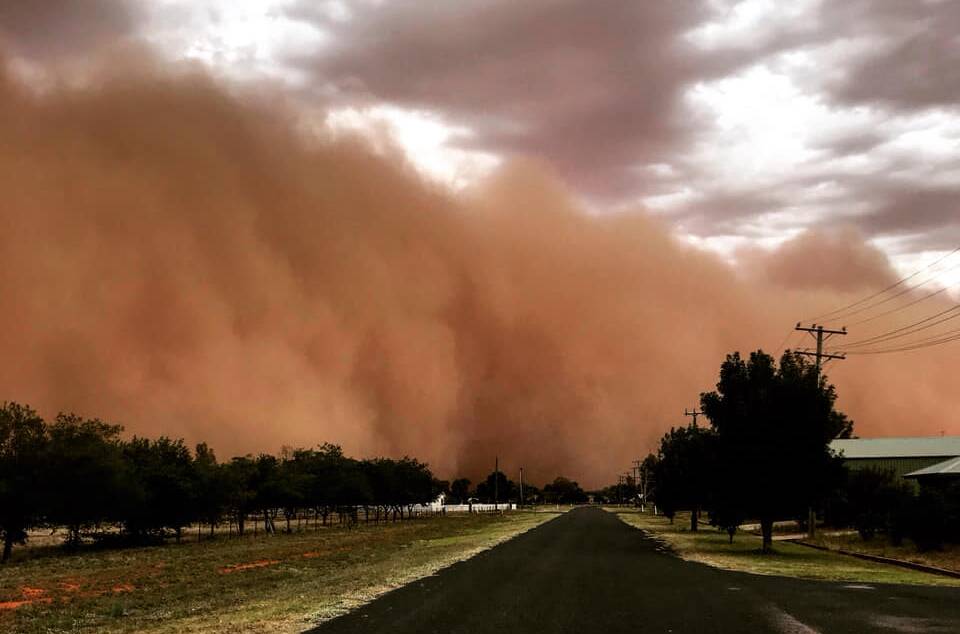ANOTHER day, another dust storm – experts say the long-running drought is to blame for the frequency of these weather events during the past few months.
Subscribe now for unlimited access.
or signup to continue reading
A dust storm swallowed the Dubbo region on the last day of 2018 – it took away the view, the air quality and it also robbed the city of its New Year’s Eve fireworks display.
Bureau of Meteorology meteorologist Kim Westcott said a dust storm is an area of raised dust that moves with the prevailing wind system.
“Dust storms have been known to dust particles as high as 4.5 kilometres into the atmosphere with the average height of a dust storm being 1-2 km,” she said.
Dust storms can move particles halfway across the Earth and can move as fast as the prevailing weather system.
- Bureau of Meteorology meteorologist Kim Westcott
“Dust storms can move particles halfway across the earth and can move as fast as the prevailing weather system.”
Ms Westcott said dust storms occur in a very sporadic nature and in dry or drought weather they can occur more frequently.
“In prolonged dry periods, dust storms are a frequent occurrence, while in the wetter periods dust storms are very uncommon due to the increase in vegetation and soil moisture binding dust particles to the surface,” she said.
Monday’s dust storm in Western NSW was accompanied by a severe weather warning from the BoM for damaging winds.

BoM data shows winds gusts were strong right across the region with a top of 92km/h in Trangie.
It was also gusty in Parkes (82km/h), Ivanhoe (80km/h), Dubbo (78km/h), Condobolin (72km/h) and Coonamble (69km/h).
The World Meteorological Organisation’s website describes dust storms a “meteorological hazards”.
“They are usually caused by thunderstorms, or strong pressure gradients associated with cyclones, which increase wind speed over a wide area,” it states.
“These strong winds lift large amounts of sand and dust from bare, dry soils into the atmosphere, transporting them hundreds to thousands of kilometres away.”
Macquarie University Department of Environmental Science senior lecturer Paul Hesse told The Lighthouse that was a link between dust storms and droughts.
“There is a simple correlation between the drought, and especially the length of the drought, and the occurrence of these dust storms,” he said.
“With the ongoing drought, we are likely to see more of these phenomena in coming months.”
DO YOU WANT MORE ORANGE AND DISTRICT NEWS?
- Receive our free newsletters delivered to your inbox, as well as breaking news alerts. Sign up below …


